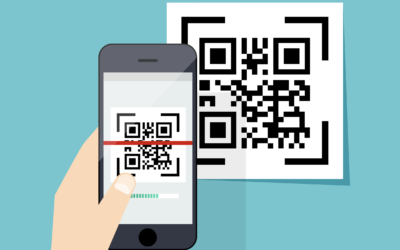The main goal for any company is to sell more. Selling is the holy grail of any business because if a business is not progressing, not evolving, then it is steadily dying. A business cannot survive without revenue. Predicting how much you are going to sell can help reduce chaos and allow you to make more confident decisions. Lack of prediction equates to a lack of direction. It means we do not have a hold on where we are going, how we will get there, and what it takes to get there. That is why building predictable revenue, predictable growth, is vital.
What is Predictable Revenue?
Predictable Revenue is a framework that was introduced by Aaron Ross in his book titled “Predictable Revenue”. It is a framework that aids in creating consistent growth based on a formula and excludes the need for last-minute hustling and guessing. Rather, you are predicting how much revenue your business can consistently generate ahead of time. This gives you a greater sense of direction.
The shift from organic growth to proactive growth takes lots of time and effort to achieve. It requires new habits, systems, and practices. When revenue starts to diminish, many businesses will directly opt to hire more sales reps, make their existing sales reps work harder, or hire more experienced sales reps. However, superior companies believe that the key for revenue growth is to increase the demand for their products or services and that can be achieved through a prospecting team that can predictably create a new lead for sales reps to close.
4 Steps to Apply Predictable Revenue.
1. Assign your people different and unique roles.
Salespeople handle three roles: prospecting, qualifying, and closing. Each one requires full dedication and a different skill set.
- Sales Development Reps (SDRs) prospect cold and inactive companies who are not engaging with you. They do not close deals, but instead, they create new sales opportunities and then pass them down to be closed
- Market Response Reps (MRRs) qualify incoming leads from the website, social media, or phone and then route that opportunity to the appropriate salesperson.
- Account Executives (AEs) close the deals pushed by the previous roles. Also, they must continue to generate new business, but not through cold calls. Rather, they focus on higher potential sources, like a list of dead opportunities, current clients, and targeted business from which they can build relationships from.
- Customer Success Managers (CSMs) dedicate their time to making the customer happy. They handle ongoing client management and renewals.
Focus your sales reps on one function. Having to juggle the different roles of qualifying, closing, and upselling strains your reps and impacts the skill they excel at. Have them focus on one role, and allow your qualifiers to qualify leads and pass on potential wins to your closers to guarantee that win.
2. Get rid of cold calling.
It is ineffective to call random numbers that are not expecting your call, in an attempt to sell them your product or service. Instead, send cold emails to prospects at first to generate “warm” calls (Cold Calling 2.0). People are not fond of cold calling, and it is difficult to track the ROI of cold calls. In addition, traditional cold calling is obsolete. It often means starting a conversation with the wrong person. So instead, make sure you qualify the accounts you are calling. Don’t pick up the phone and call random companies that do not care about what you are offering. Instead, find time to identify your Ideal Customer Profile. Customers who fall within that category are the most likely to purchase. Here are some extra tips to break cold calling:
- Focus on results, not activities. Your main aim should be towards generating conversions. How many calls/appointments take place per day is not important. Instead, focus on how many qualification calls are you making per week? How many qualified opportunities are being passed through the funnel per month? This will help you set more realistic goals in your pipeline.
- It is a system. Cold Calling 2.0 requires consistency in training, equipping, and developing employees. Your employees need to be aware of how “x effort” will lead to “y results”. Take time to continuously test out tools that can help improve your team’s productivity and lead predictability.
3. Set up your sales team & get them started with “warm” calling.
Before you get your team started with warm calling you need to first make sure that your sales team is set properly. Assure that at least one person in the organization is dedicating 100% of his time to prospecting. Also, that you have a CRM on hand. Once all these fit into place, you can start with allocating your warm calling strategy.
- Get a clear understanding of your Ideal Customer Profile. Understand who they are as a person, what are their pain points, challenges, deal-breakers, etc. Having a clear definition of your ICP gives you the upper hand, as it becomes much easier to find prospects through smart targeting and disqualifying poor prospects.
- Build your list of ideal prospects. You can do that either by building your list in-house or by acquiring one from a 3rd party provider. The best practice is to make your own list using LinkedIn and freelancers as it is much more scalable and cost-effective.
- Run outbound email campaigns. Many companies depend on cold calling as the first step to prospecting; phone calls are vital, but they should be the second step. Start by emailing your prospects and, if you receive a response, then call them.
- Sell the dream. Once you are on call with the right executives, make sure you help them paint the vision of how your product or service will help them solve their problems.
- Pass down the lead. SDRs should pass down qualified leads down to the AE. Then the AE will make sure to requalify the opportunity. If the lead fits the company’s ICP and shows a clear interest in going forward then the SDR can pass it over to the AE to further check if the opportunity was rightly qualified.
4. Find the right technology to help you scale the way you operate.
The same way you keep track of your sales process to track the movement and progress of your sales pipeline, keep track of your prospecting process. Which prospects have not been contacted yet, which ones are being nurtured, which ones are dead opportunities, which ones are a bad fit, who didn’t respond, who are all your current customers, and so on.
Predicting how much you are going to sell, gives employees to reach that target. It also reduces chaos immensely. Outbound sales have evolved from a boring room-style cold calling operation to a targeted hunting process thanks to Predictable Revenue.



